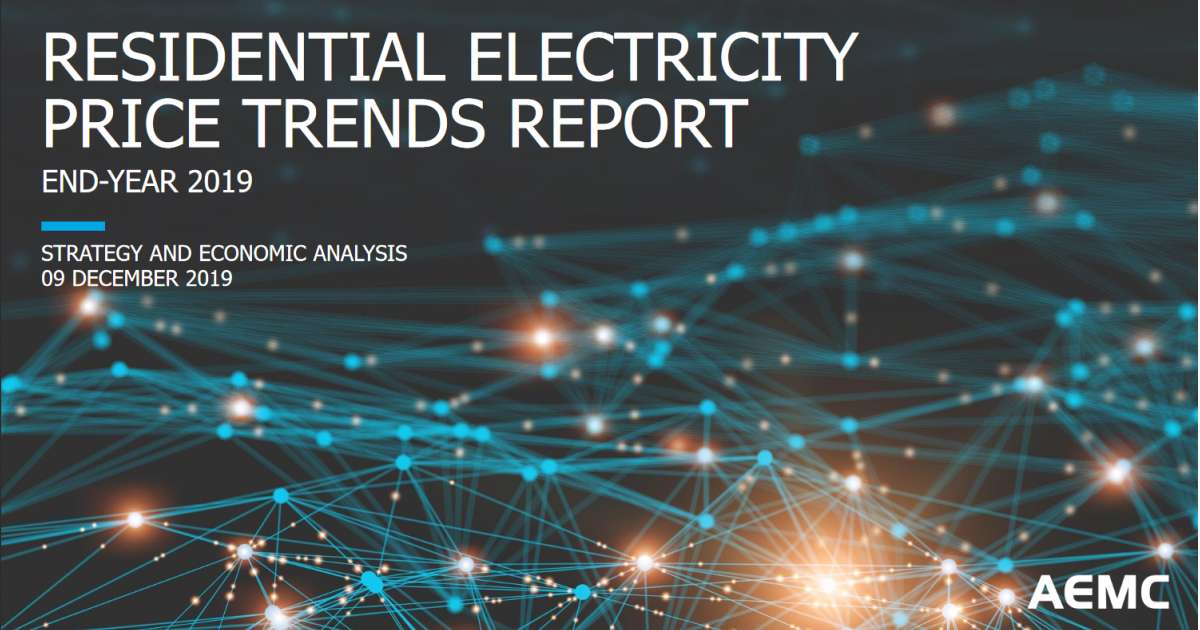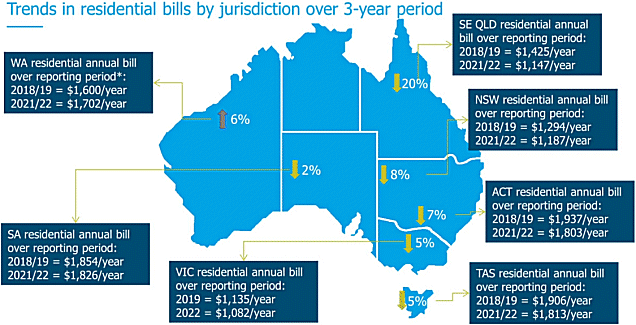The Australian Energy Market Commission (AEMC) thinks cheaper electricity bills are on the cards for many Australians over the next few years, largely thanks to the impact of renewable energy. But your mileage may vary.
Released this morning, the AEMC’s annual report on electricity price trends predicts residential electricity costs will continue to fall out to 2022 in most states due to more generation capacity in the market, lower regulated prices for networks and reductions in green scheme costs.
Electricity bill relief won’t be even across the country and in WA, households may be burdened with further increases.
The following indicates electricity price/bill projections for financial year 2018/19 out to FY22 for a “typical” or “representative” customer – the definition of which varies state to state and is explained in greater detail in the report:
- SE Queensland – 20% reduction
- South Australia – 2% reduction
- Victoria – 5% reduction
- New South Wales – 8% reduction
- ACT -7% reduction
- Tasmania 5% reduction
- Western Australia – 6% increase
- Northern Territory – not included in report
Impact On Feed-In Tariffs?
While some of the reductions are attributable to decreases in network and environmental program costs, the bulk will come from wholesale electricity price cuts. This may result in decreases in solar feed-in tariff rates in some states. In Victoria, the Essential Services Commission has already signaled it wants to reduce feed-in tariff rates from the start of the new financial year.
This doesn’t mean installing solar panels won’t be worthwhile, but self-consumption of solar energy will become even more desirable.
Don’t Count Your Electricity Bill Chickens
The AEMC notes its projections are just that.
“More supply puts downward pressure on prices. But it’s important to note that over a decade of analysis we have seen trends change sharply in response to factors such as sudden generator closures and implementation of new policies,” said AEMC Chairman, John Pierce.
There could also be more generation and storage capacity brought online than the AEMC anticipates, and this will put more downwards pressure on electricity prices.
The AEMC says price trends will affect individual households differently depending on a variety of factors and it will remain important to shop around for the best deal. Solar households can use SQ’s new online tool to quickly and easily compare electricity retailers and determine which offer the best balance of high feed-in-tariffs, low usage tariffs and low daily charges.
Here’s the AEMC’s full presentation, including methodology (runs for just under 15 minutes):
The full report and other documentation including fact packs for each state can be found here.



 RSS - Posts
RSS - Posts



Idea for an article:
How well or otherwise have previous AEMC Residential Electricity Price Trends Reports been at predicting the trends?